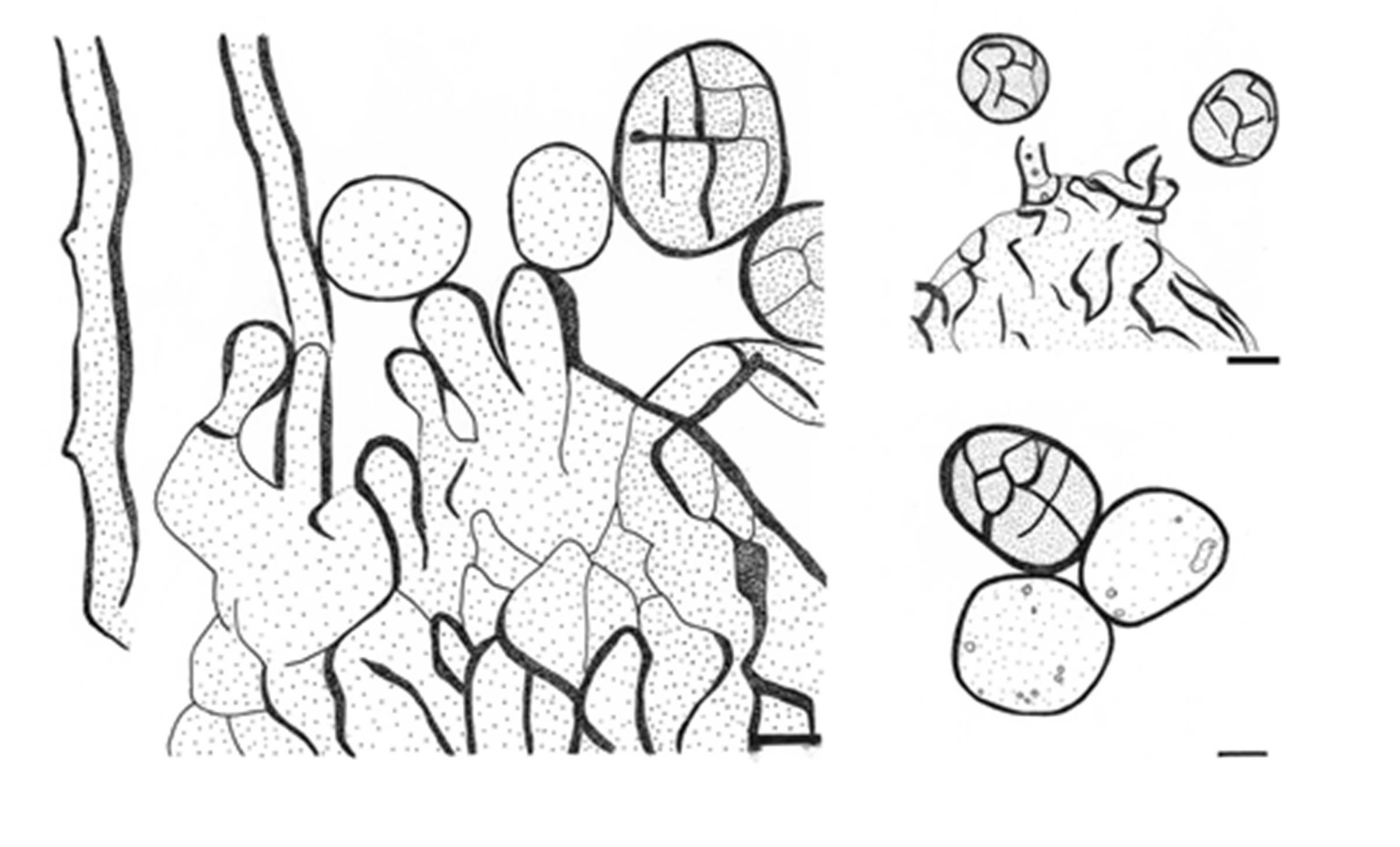Neocamarosporium goegapense Crous & M.J. Wingf., Persoonia, Mol. Phyl. Evol. Fungi 32: 273 (2014)
Pathogenic on dying leaves of Mesembryanthemum sp. Sexual morph: unknown. Asexual morph: Conidiomata 300 μm diam, brown to black, immersed, becoming erumpent, globose with papillate apex and central ostiole. Conidiomata wall consists of 3–6 layers of brown textura angularis. Conidiophores reduced to conidiogenous cells. Conidiogenous cells 7–9 × 5–6 μm, lining the inner layer of conidioma, separate, hyaline, smooth, ampulliform, proliferating several times percurrently near apex, or at the same level, giving rise to prominent periclinal thickening. Conidia (15–) 20–22(–24) × 15–17(–19) μm, solitary, initially hyaline, aseptate, thick-walled, developing a central septum and then becoming muriformly septate, shape variable from globose to obovoid to ellipsoid, golden brown, finely roughened, thick-walled.
Notes: Neocamarosporium was introduced by Crous et al. (2014) and typified with Neocamarosporium goegapense. Neocamarosporium is morphologically similar to Camarosporellum, though the latter appears to have holoblastic conidiogenesis. Based on a megablast search of NCBIs GenBank nucleotide database of LSU and ITS sequences, Crous et al. (2014) referred Neocamarosporium to Pleosporaceae. Crous et al. (2014) also suggested that phylogenetically, Neocamarosporium is allied to a clade containing taxa accommodated in Phoma, Chaetosphaeronema and Pleospora, but morphologically quite distinct. During our phylogenetic inferences we observed that the type strain of Neocamarosporium goegapense (CBS 138008) forms a robust clade sister to the Clathrospora and Decorospora clades. Furthermore, putative strains of Phoma betae (CBS 109410), Pleospora betae (IMI 156653) and Pleospora bjoerlingii (ICMP10945 reside within the Neocamarosporium clade. In recent study de Gruyter et al. (2013) reported Phoma betae (CBS 109410) as the asexual state of Pleospora betae (IMI 156653), thus they synonymised Phoma betae under Pleospora betae. Furthermore based on the morphological and DNA data they synonymised Pleospora bjoerlingii under Pleospora betae. Therefore in this study we introduce Neocamarosporium betae to accommodate these species in genus Neocamarosporium.
Fig. 1 Neocamarosporium goegapense (Redrawn from the holotype of Neocamarosporium goegapense in Crous et al. (2014)). Scale bars: 10 μm

